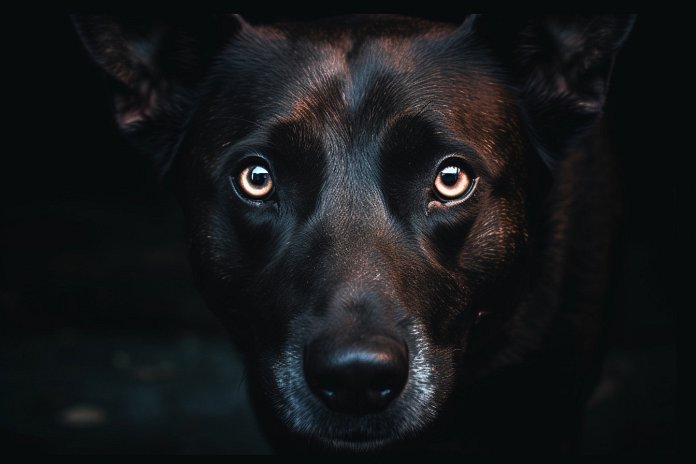
There are times in our lives when we all feel terror for various reasons. Sometimes it’s because of something scary on TV, while other times it’s due to a real-life situation. True terror can have a lasting impact on our lives. But can dogs also feel terror?
Signs Your Dog Feels Terror
Research shows that dogs can indeed feel terror. While they may not feel it for the same reasons we do, dogs can experience fear and terror from things happening around them or to them. This is especially evident in dogs that have been abused.
When a dog feels terror
, there are several signs to look out for. These include cowering, whimpering, vomiting, hiding, refusing to come out, tail between the legs, and yelping. Some dogs may also become aggressive when they feel threatened or terrified.
Body Language
Dogs also display signs of terror through their body language. This can include shaking, tail tucking, pacing, panting, and flattened ears. The way a dog reacts and displays fear can vary based on its nature and the situation it is in.
Other Signs
Additional signs that your dog may be feeling terror include drooling, reluctance to go near certain areas or people, panting, dilated pupils, and incontinence.
History of Canine Emotions
Extensive research has shown that dogs can feel fear and terror. Dogs have strong senses and instincts, so when they feel terror, it’s usually for a good reason. Dogs may respond to terror by becoming nervous and frightened, or by becoming defensive and aggressive. Just like humans, dogs have different personalities and reactions to terror.
Causes of Dogs Feeling Terror
Dogs can experience terror due to abuse, threats, and harmful actions against them. The terror they feel is very real and should be taken seriously.
Identifying Sources of Fear
If your dog shows signs of terror in certain situations or around certain people, it’s important to address it. Dogs do not fake being terrified, so there is likely a reason behind their fear. It may not be obvious, such as past abuse or sensing a bad vibe from someone.
Removing sources of terror
from your dog’s environment is important. However, in some cases, you may need to work with your dog to help them overcome their fear related to their past experiences.“Dogs, like humans, can feel terror – a powerful emotion that can leave lasting effects on their lives.”

Tips & Things to Know
1️⃣ Recognize the signs: Pay attention to the signs that indicate your dog is feeling terror, such as cowering, whimpering, hiding, aggressive behavior, shaking, tail tucking, and pacing. Understanding these signs can help you identify when your dog is feeling fearful or terrified.
2️⃣ Understand the causes: Dogs can feel terror due to past abuse, threats, or harmful actions. It’s important to acknowledge and address the underlying causes of your dog’s fear. This may require working with a professional trainer or behaviorist to help your dog overcome their fear and build confidence.
3️⃣ Create a safe environment: Take steps to remove any triggers or sources of terror from your dog’s environment. This may involve avoiding certain situations or people that cause fear in your dog. Additionally, provide your dog with a safe and secure space where they can retreat to when they feel scared. Consistency, patience, and positive reinforcement can help your dog feel more secure and reduce their overall level of fear and terror.
Frequently Asked Questions, Answered ✅
1. Can dogs feel terror in the same way that humans do?
– Yes, research has shown that dogs can feel fear and terror in response to real situations and incidents.
2. What are some signs that indicate a dog is feeling terror?
– Signs of terror in dogs include cowering, whimpering, vomiting, hiding, refusing to come out, tail tucked between the legs, yelping, aggression, snarling, snapping, exposed teeth, raised hackles, and biting.
3. How can a dog’s body language indicate that it is feeling terror?
– Body language signs of terror in dogs may include shaking, tail tucking, pacing, panting, flattened ears, and variations based on the dog’s nature and mode of response.
4. What are other signs that may indicate a dog is feeling terror?
– Other signs of terror in dogs can include drooling, refusal to go near a particular person or area, panting, dilated pupils, and incontinence.
5. What can cause dogs to feel terror?
– Dogs can feel terror as a result of abuse, threats, and other harmful actions against them. They may also pick up on bad vibes from people or be affected by tense or argumentative situations.